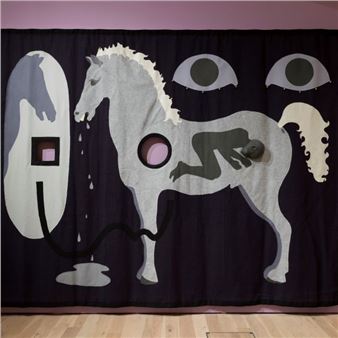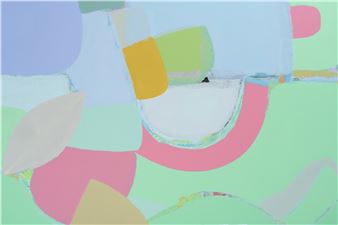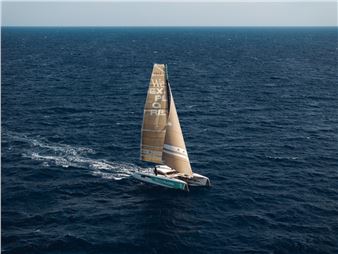Luiz Zerbini: Leisurely Floating Luminescence
Fortes D’Aloia & Gabriel presents Leisurely Floating Luminescence, a new exhibition by Luiz Zerbini in São Paulo. In this body of work, the image of termite mounds from the Brazilian Cerrado — inhabited by bioluminescent larvae — triggers a new investigation into color, light, and rhythm through the phenomena of the natural world.
Within the exhibition space, a large sculptural installation converses with large-scale paintings, creating an environment where traces of human presence coexist with the reproduction and transformation of nature’s own image. In this interconnected and hypnotic atmosphere, surfaces and volumes become portals to an expanded perception. Pictorial and sculptural properties shift from one work to another, establishing a system of visual exchanges. The termite mound, in turn, appears alternately in painting and as a lysergically textured sculptural body.
“Like an affective and botanical inventory of the tropics, the artist once again turns to the landscape — not as an idyllic setting, but as a living body, inhabited and strained by visible and invisible histories. The forest, the fields, the riverbanks, urban traces, and the remains of what we call civilization are translated into large-scale sculptures and canvases marked by geometric patterns and organic gestures,” writes Catarina Duncan in the critical essay accompanying the exhibition.
Together, the paintings and installation form a web of relations, between narrative and geography, that highlights Zerbini’s ongoing experimentation across different media. The exhibition reveals how environments, whether tropical forests, animal architectures, or coastal edges, are composed of vital layers: balances between opposites, processes of transformation, and historical, ecological, and aesthetic entanglements.

Recommended for you
Fortes D’Aloia & Gabriel presents Leisurely Floating Luminescence, a new exhibition by Luiz Zerbini in São Paulo. In this body of work, the image of termite mounds from the Brazilian Cerrado — inhabited by bioluminescent larvae — triggers a new investigation into color, light, and rhythm through the phenomena of the natural world.
Within the exhibition space, a large sculptural installation converses with large-scale paintings, creating an environment where traces of human presence coexist with the reproduction and transformation of nature’s own image. In this interconnected and hypnotic atmosphere, surfaces and volumes become portals to an expanded perception. Pictorial and sculptural properties shift from one work to another, establishing a system of visual exchanges. The termite mound, in turn, appears alternately in painting and as a lysergically textured sculptural body.
“Like an affective and botanical inventory of the tropics, the artist once again turns to the landscape — not as an idyllic setting, but as a living body, inhabited and strained by visible and invisible histories. The forest, the fields, the riverbanks, urban traces, and the remains of what we call civilization are translated into large-scale sculptures and canvases marked by geometric patterns and organic gestures,” writes Catarina Duncan in the critical essay accompanying the exhibition.
Together, the paintings and installation form a web of relations, between narrative and geography, that highlights Zerbini’s ongoing experimentation across different media. The exhibition reveals how environments, whether tropical forests, animal architectures, or coastal edges, are composed of vital layers: balances between opposites, processes of transformation, and historical, ecological, and aesthetic entanglements.

 ARTISTS
ARTISTS









![Rosângela Rennó: Living Things [and the Unlettering by Stone] - Cristina Guerra Contemporary Art Rosângela Rennó: Living Things [and the Unlettering by Stone]](https://media.mutualart.com/Images/2025_10/12/10/105129494/de765ce4-be97-4c22-b762-34c6ea63a14c_338.Jpeg)






